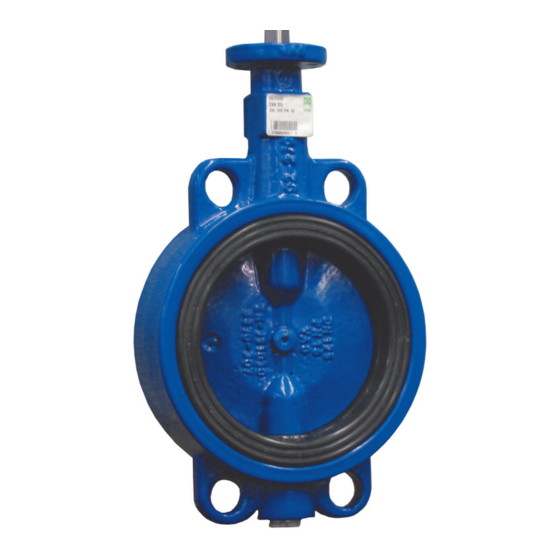
Summarization of Contents
General Information
Safety Instructions
General safety instructions for operation and maintenance of VAG CEREX® 300 Butterfly Valves.
Proper Use of Butterfly Valves
Defines the intended use of the VAG CEREX® 300 Butterfly Valve as a shut-off valve.
Valve Identification
Details how to identify the VAG CEREX® 300 Butterfly Valve using its rating plate.
Transport and Storage Guidelines
Valve Transportation
Guidelines for safe transportation of the VAG CEREX® 300 Butterfly Valve.
Valve Storage Recommendations
Recommendations for storing the VAG CEREX® 300 Butterfly Valve to maintain its integrity.
Product Features and Performance
Features and Function Description
Describes the main features and operational principles of the VAG CEREX® 300 Butterfly Valve.
Applications of Butterfly Valves
Outlines the various media and environments where the VAG CEREX® 300 Butterfly Valve can be used.
Performance Limits and Cavitation
Details operational limits, including cavitation, Kv values, and flow velocity.
Pipeline Installation
Site Conditions for Installation
Lists necessary conditions and preparations before installing the valve in the pipeline.
Installation Location Requirements
Guidance on selecting an appropriate location for the valve installation.
Upstream and Downstream Installations
Specific installation requirements for upstream and downstream pipeline configurations.
Valve Installation Position
Describes the permissible and preferred installation positions for the valve.
Assembly Instructions and Fittings
Step-by-step instructions for assembling the valve and its associated fittings.
Valve Set-up and Operation
Visual Inspection and Preparation
Procedures for visual checks and preparation before operating the valve.
Function Check and Pressure Test
Steps for conducting functional checks and pressure tests on the installed valve.
Valve Actuators
General Actuator Information
General information and requirements for valve actuators.
Operating Torques for Actuators
Specifies the maximum operating torques for different valve sizes and pressures.
Electric Actuator Assembly
Instructions on how to mount and configure electric actuators for the valve.
Maintenance and Repair Procedures
General Safety for Maintenance
Essential safety guidelines to be followed during maintenance and repair work.
Inspection and Operation Intervals
Recommended intervals for inspecting and operating the valve.
Maintenance and Parts Replacement
Details on performing maintenance tasks and replacing valve components.
Cleaning and Lubrication of Parts
Instructions for cleaning and lubricating the valve components.
Troubleshooting Valve Issues
Addressing Valve Noise
Troubleshooting steps for identifying and resolving valve noise issues.
Resolving Valve Operation Failures
Steps to diagnose and fix problems preventing valve operation.
Fixing Body Seat Leaks
Procedures for addressing leaks originating from the valve's body seat.
Managing Valve Cavitation
Troubleshooting guide for cavitation problems within the valve.
Resolving Body Leaks
Methods to resolve leaks occurring at the valve body.
Addressing High Operating Forces
Addressing issues related to excessive operating forces required for the valve.
Contact Information
VAG GmbH Head Office Contact
Contact information for the VAG GmbH head office.
VAG Service Contact Details
Contact details for VAG service hotline and email.











Need help?
Do you have a question about the CEREX 300-W and is the answer not in the manual?
Questions and answers